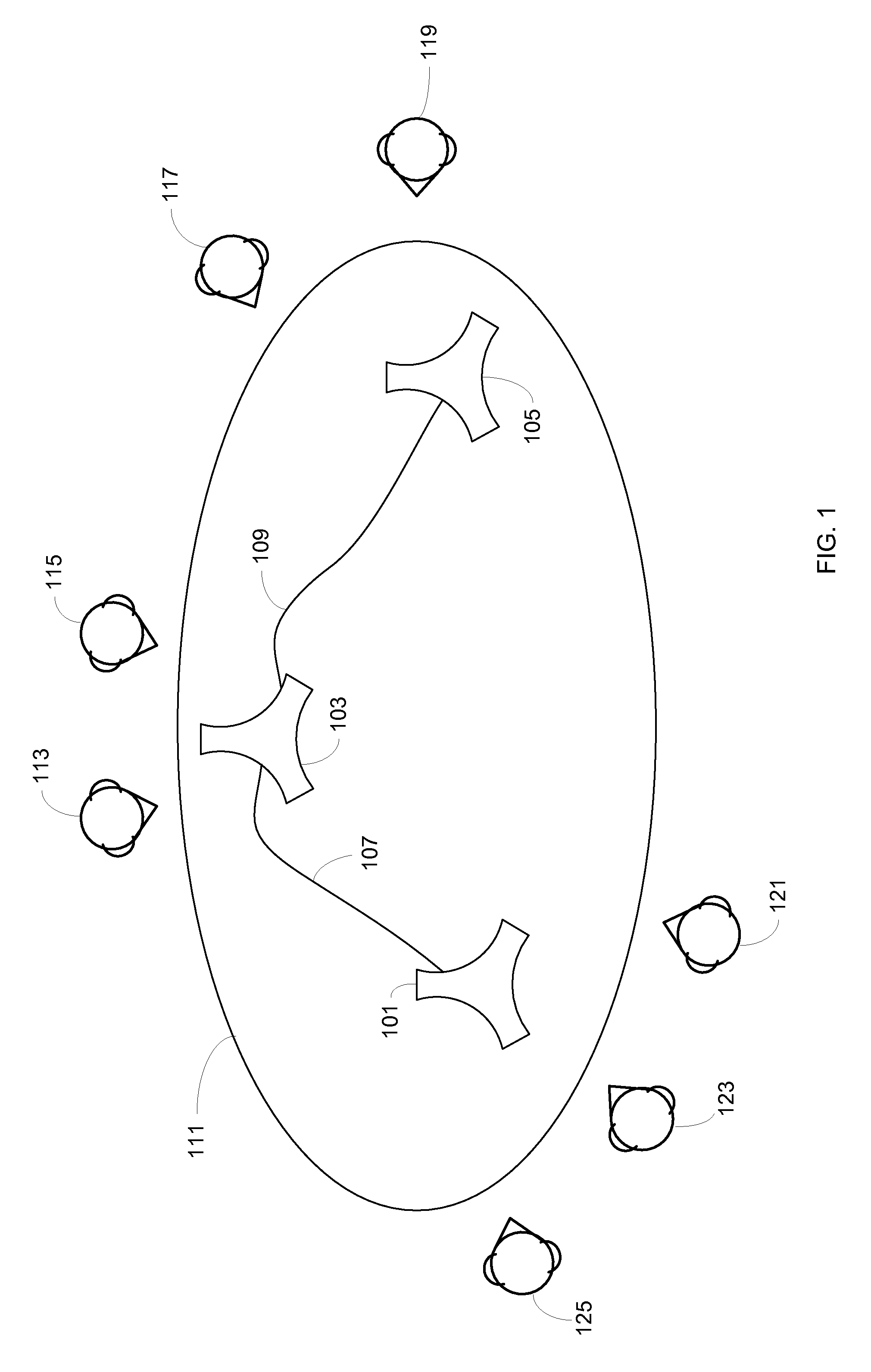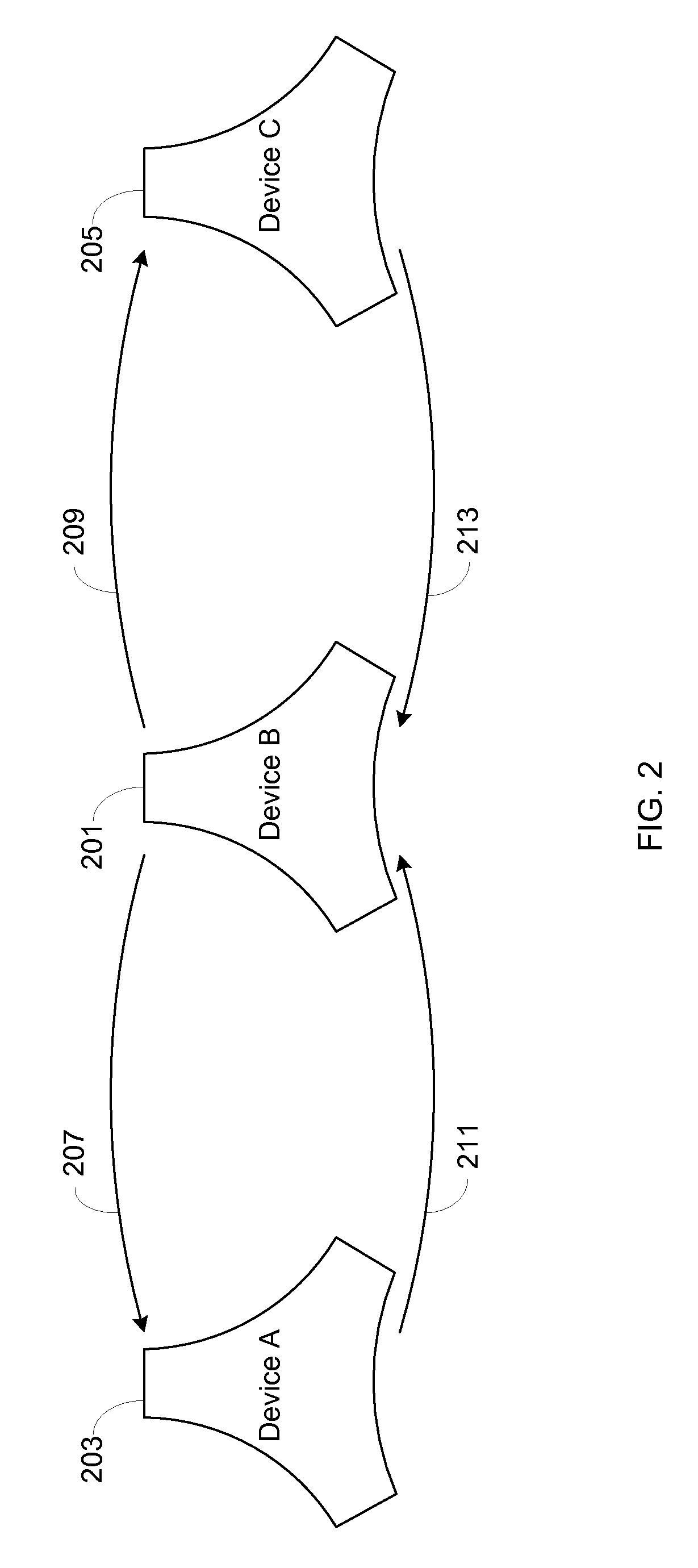Distributed Bridging
a technology of distributed bridging and conferencing system, which is applied in the field of conferencing system, can solve the problems of exacerbated reverb problem, degraded inter-device communication, and high cost, and achieves less computationally intensive operations, efficient distribution of processing, and reduced delay
- Summary
- Abstract
- Description
- Claims
- Application Information
AI Technical Summary
Benefits of technology
Problems solved by technology
Method used
Image
Examples
Embodiment Construction
[0027]FIG. 1 illustrates three conferencing devices serially linked i.e., daisy-chained. Conferencing devices 101, 103, and 105 are interconnected in a daisy-chained manner. Conferencing device 101 is electrically connected, via cable 107, to conferencing device 103, which in turn is electrically connected to conferencing device 105 via cable 109. Alternatively, the conferencing devices 101, 103 and 105 can communicate over wireless connections, e.g., RF, BLUETOOTH®, etc. All the conferencing devices are placed on a conference table 111, although multiple tables may be used. Near-end participants 113-125 gather around the table 111 to engage in a meeting with each other and one or more far-end participants through the conferencing devices 101, 103, and 105. The distribution of the near-end participants 113-125 around the table 111 is non-uniform. In the shown setup, each conferencing device 101, 103, and 105 is placed proximal to a near-end participant or a group of near-end partici...
PUM
 Login to View More
Login to View More Abstract
Description
Claims
Application Information
 Login to View More
Login to View More - R&D
- Intellectual Property
- Life Sciences
- Materials
- Tech Scout
- Unparalleled Data Quality
- Higher Quality Content
- 60% Fewer Hallucinations
Browse by: Latest US Patents, China's latest patents, Technical Efficacy Thesaurus, Application Domain, Technology Topic, Popular Technical Reports.
© 2025 PatSnap. All rights reserved.Legal|Privacy policy|Modern Slavery Act Transparency Statement|Sitemap|About US| Contact US: help@patsnap.com



